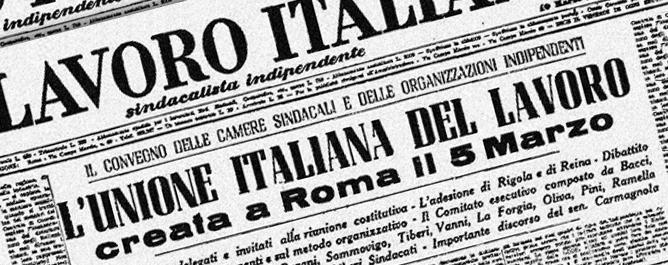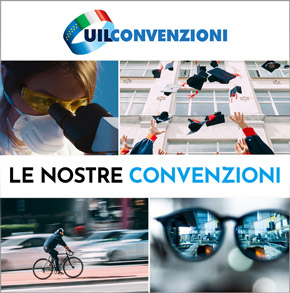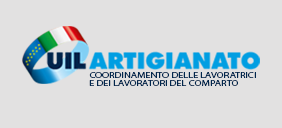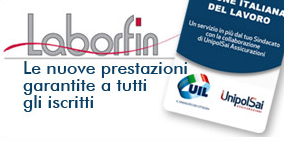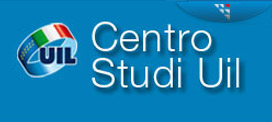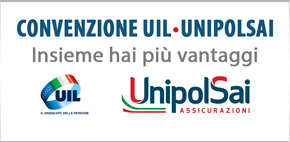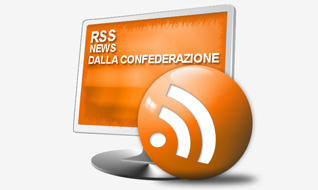UIL was created upon the initiative of a group of people with common ideals, who were able to identify goals which could be reached thanks to a modern democratic, independent, autonomous and Socialist-oriented organization.
Hence, UIL has a long-standing tradition and its DNA is deeply-rooted in unique principles which were evident in its creators as early as their opposition to the Fascist regime, their subsequent commitment in the Resistance movement and then their union activity in the Confederation. Those men brought into the organization the principles pursued by Filippo Turati, the undisputed reformers’ leader, in the wake of the ideals of another great father of Italy, Giuseppe Mazzini, whose thought has always been particularly topical.
Turati and Mazzini were two giants who, at political level, influenced the ideal choices made by those who shaped and led UIL, while Bruno Buozzi was the example to follow at union level. He became the permanent point of reference for many prestigious men who founded UIL and subsequently organized it.
The UIL ideal heritage was enriched by the Partito d’Azione movement and the lessons of the brothers Carlo and Nello Rosselli, and benefited from the political contribution of great intellectuals such as Leo Valiani and Ignazio Silone.
Their contribution and support perfectly fitted the union model devised by Bruno Buozzi, who had devoted so much energy in building it, even though – unfortunately - he could not see the crowning of its efforts because of his assassination.
In the speech delivered on March 11, 1945 on the occasion of the inauguration of the monument devoted to Bruno Buozzi in the Verano cemetery, Giuseppe Di Vittorio described that Socialist as the real CGIL leader by saying: “Buozzi was violently torn from CGIL of which he was bound to become the natural leader”.
An equally important tribute to that man was paid by the leader of the Christian-Democrat wing, Achille Grandi, who stated that in Buozzi “everybody, regardless of their political complexion, could see the leader of the Italian union movement.” We are particularly proud of these judgements and recognitions regarding our putative father, who has become an integral part of our organization DNA. Therefore we can undoubtedly maintain that the UIL DNA is made up of a mix of valuable union, cultural and political contributions.
Thanks to that heritage, as early as its creation on March 5, 1950, UIL has given rise to a secular and independent organization, which has rejected any party influence or hegemony over the union organization. It has also refused to be a mere tool “whose tasks are confined only to wage claims and the regulation of workers’ rights and duties in factories or companies”, since it has always aimed at becoming an autonomous Confederation capable of tackling “all the problems affecting workers’ interests directly or indirectly”, so as not to let “only Parliamentarians and political parties to face these problems, but to address them supported by trade unions without them being subjected to any party”.
This has been a fundamental stance bound to affect the preservation of the union role and inspire most of their claim policy.
The UIL founding fathers, irrespective of their political background (pre-Fascist unionism, Socialism, Social-Democracy, Partito d’Azione, Republican Party, etc.) found in the fundamental values they all shared the necessary energy to launch the organization and make it be known and appreciated as a new union model.
On March 5, 1950 UIL was established with the participation of 253 delegates representing thousands of executives organized at local level, who were all willing to make an organizational choice capable of offering to workers an “organization free from the hegemony of the two major political parties prevailing within CGIL (Communists) and CISL (Christian-Democrats) – a union which, thanks to its roots, ideals and consistency could address current issues, but also define the strategic lines of its future activity.
We can realize that those results have been reached by going over the history and the events which have taken place over its sixty years of life, as well as by tracing back the pathway followed by its Congresses marked by slogans which have rigorously embodied the choices made when the organization was set up.
Those slogans ranged from “Peace, Freedom, Work” and “New Fighting Tools, Wider Prospects For The Working Class” (2nd and 3rd Congresses) to “Planning Strengthens Union Activity and Ensures its Efficacy”, “Strong Unions For A Just Society”, “UIL Unity For All Workers’ Unity” (4th, 5th and 6th Congresses). The four subsequent Congresses were all focused on the new way to be union members: “Participation for Change” “From Antagonism to Protagonism” “Look to the Future” and “Make Italy work”. More than any others in the past, those slogans were a modern transposition of Bruno Buozzi’s ideals.
Over the last five years UIL has been vigourously reproposing the centrality of work and the union role - again topics by which Bruno Buozzi set great store – with the following slogans “Labour Rights, Labour For Development” “...More Unionism” “More Value For Work” “Work, The Real Wealth Of The Country”. The slogan of the last Congress, “UIL, The Reformist Future”, reaffirmed the role played by reformism in achieving a more equitable and just society in the framework of an ongoing democratic, civil and social progress. This quick roundup of slogans enables us to show to what extent UIL has always been attached to its roots, thus being able to interpret current times and especially adjusting its activity to change, by often anticipating them.
The latest Congresses have shown to what extent UIL places work - as an absolute value and real wealth of the country - at the core of its activity, and views reformism as the only way for fully developing and enhancing the whole society. It is the natural prevailing of the DNA that liberals and reformers were able to pass down to current leaders and that they will not fail to pass down to the future generations of leaders so as to ensure the ongoing development of the organization.
